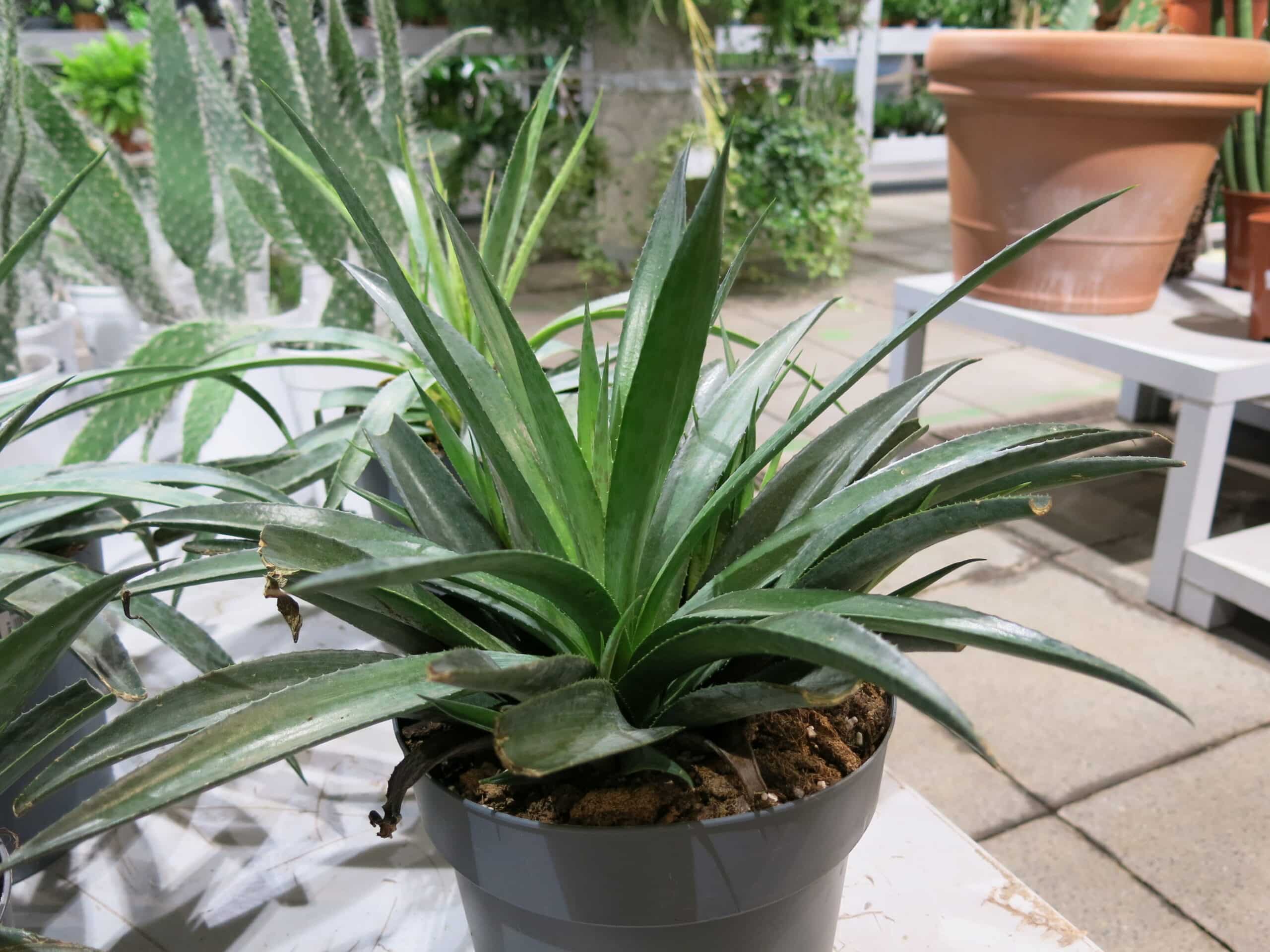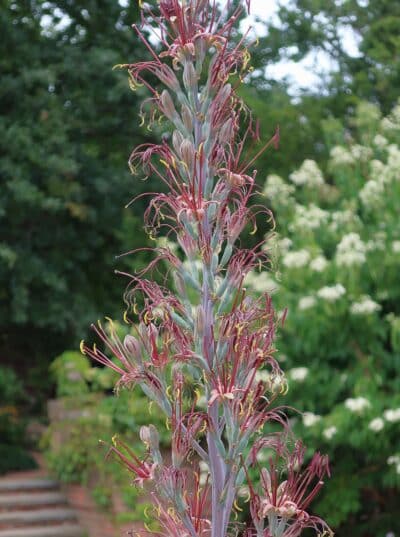
Image - Wikimedia / cultivar413
The mangave is a type of exotic agave, elegant, which has really beautiful colors. It is a plant that is not usually found for sale, and when it is found, the price tends to be much higher than that of the maguey that the Mexicans would say. But since we love that you are informed of as many plants as possible, we are going to talk to you about these beauties.
So without further ado, let's get started.
What is mangave and what are its characteristics?

Officially, mangaves are plants that belong to the genus Agave. However, at the beginning of the XNUMXst century, they belonged to their own genus x Mangave, and at that time it was said that they were hybrids that came from the cross between Agave and Manfreda. But currently Manfreda is an obsolete scientific name, since it was included in that of the agaves.
But in any case, you should know that our protagonists have some kind of agave as their father or mother, such as Agave mitis, Macroacantha agave: Agave maculata. So We are talking about plants that are resistant to high temperatures, since the agaves or maguey live in regions where the climate is very warm.

Image - Wikimedia / cultivar413
If we focus on its physical characteristics, we must know which are plants that grow forming a rosette of succulent leaves which can measure about 50 centimeters in height by about 40-60 centimeters in width, although they can be twice as large on rare occasions. Such leaves are warm colored, visually pleasing. From the center of the rosette arises a flower stalk in summer, at the end of which sprout brown flowers. Like the agave, it only blooms once in its life and then dies.
What are the care of the mangave?
These plants look very pretty in succulent gardens, and in large pots. In addition, and as you will see, it is not difficult to keep them in good health:
Location
the mangave They have been placed in a place where there is a lot of light, they can even receive direct sun for a while in the morning or in the afternoon. Also, you have to know that they resist temperatures down to -4ºC, so you can leave them outside all year if the winter is mild in your area.
Soil or substrate
- Garden: if you want to plant your specimen in the soil of your garden, it is convenient that you take into account that the roots of this plant fear waterlogging, and that therefore they will only be fine if the soil drains the water quickly.
- Flower pot: if, on the other hand, you prefer to plant it in a pot, either because you don't have a garden, because you have run out of space to have it in it, or because you simply want to keep it in a container, you must fill it with cactus substrate.
Irrigation
Since it has agave genes, or rather, since it is a type of agave, It is not a plant that has to be rehydrated frequently. In fact, you will only have to do it in the event that the earth is very, very dry, something that will happen if, for example, it does not rain for a long time.
In the event that you doubt, it is preferable that you do not water it yet. Wait a few more days, until the soil dries out more. If the plant does not show any symptoms of lack of water such as the rapid browning of the new leaves, nothing will happen to it for not hydrating yet.
Now, when you are going to water it, pour water on it -to the earth- until you see that it is soaked.
Subscriber
You can pay your mangave from mid-spring to the end of summer. In the event that you are in a tropical place, you can do it throughout the year.
Since it is a succulent, you can fertilize it with specific fertilizers for that type of plant. But yes, it is highly recommended that you buy liquid fertilizers since their effectiveness is faster.
Multiplication
The easiest way it is through the separation of the offspring. Since these already have their own roots, it's as simple as digging around the said a bit with a small shovel, and pulling it out. If it is in a pot, then you can choose to remove the mother plant once it dries -remember that after flowering it dies- and leave the young there, or take the opportunity to separate them.
Esto do it in spring or, at the latest, in mid-summer. It must take at least two months of good weather for them to survive the transplant and resume their growth.
Rusticity
the mangave It resists temperatures of up to -4ºC minimum, and 40ºC maximum more or less. It is, therefore, a highly recommended plant for the Mediterranean region, but also for any other that enjoys a mild or warm climate.
What do you think of the manga?





